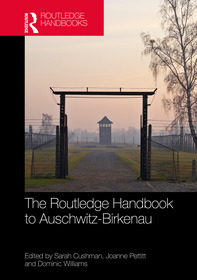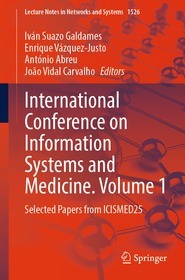
The Routledge Handbook to Auschwitz-Birkenau
- Publisher's listprice GBP 230.00
-
109 882 Ft (104 650 Ft + 5% VAT)
The price is estimated because at the time of ordering we do not know what conversion rates will apply to HUF / product currency when the book arrives. In case HUF is weaker, the price increases slightly, in case HUF is stronger, the price goes lower slightly.
- Discount 10% (cc. 10 988 Ft off)
- Discounted price 98 894 Ft (94 185 Ft + 5% VAT)
Subcribe now and take benefit of a favourable price.
Subscribe
109 882 Ft

Availability
Estimated delivery time: In stock at the publisher, but not at Prospero's office. Delivery time approx. 3-5 weeks.
Not in stock at Prospero.
Why don't you give exact delivery time?
Delivery time is estimated on our previous experiences. We give estimations only, because we order from outside Hungary, and the delivery time mainly depends on how quickly the publisher supplies the book. Faster or slower deliveries both happen, but we do our best to supply as quickly as possible.
Product details:
- Edition number 1
- Publisher Routledge
- Date of Publication 12 August 2025
- ISBN 9781032202440
- Binding Hardback
- No. of pages450 pages
- Size 246x174 mm
- Weight 990 g
- Language English
- Illustrations 11 Illustrations, black & white; 11 Halftones, black & white; 8 Tables, black & white 686
Categories
Short description:
This handbook examines Auschwitz-Birkenau as both a site and a symbol of Nazi genocide. Scholars from a range of disciplinary perspectives consider Auschwitz’s history by engaging with Holocaust historiography and its place in Holocaust memory and representation, illustrating their mutual influence.
More
Long description:
This handbook examines Auschwitz-Birkenau as both a site and a symbol of Nazi genocide. Scholars from a range of disciplinary perspectives consider Auschwitz’s history by engaging with Holocaust historiography and its place in Holocaust memory and representation, illustrating their mutual influence.
The chapters bring new insights to topics that other studies of Auschwitz have explored before, such as the Sonderkommando, the Czech family camp, and literary representations of Auschwitz. Other chapters cover recent developments and more neglected areas, such as the experience and memory of Romani prisoners, the fate of Soviet prisoners of war, and Auschwitz’s presence on social media. The handbook also responds to a number of recent trends and new paradigms in Holocaust Studies, including contributions from the fields of Environmental Studies, Spatial Studies, and Gender Studies.
As a crucial overview of the topic of Auschwitz-Birkenau and an introduction to its most recent and fruitful scholarly approaches, this handbook will be a valuable resource for undergraduates from second year and up, as well as for graduate students and researchers seeking a survey of the field.
MoreTable of Contents:
Introduction Section 1: Placing Auschwitz 1. Auschwitz and the SS Concentration Camp System 2. Mapping Auschwitz 3. Thinking Auschwitz Spatially 4. The Auschwitz Environment 5. Auschwitz and Its Locale Section 2: Prisoner Groups 6. O Drom o Rromano k’o Aušvic (The Romani Road to Auschwitz) 7. The Theresienstadt Family Camp in Auschwitz 8. Prisoner of War Camp Auschwitz 9. Children in Auschwitz-Birkenau 10. The Auschwitz Sonderkommando Section 3: Experiences of Community and Suffering 11. Food and Hunger at Auschwitz 12. The “Muselmann” in Auschwitz 13. Music Making as Community Formation in Auschwitz-Birkenau: The Case of Krystyna Żywulska 14. Torah and Mitzvahs in Hell: Jewish Religious Activity in Auschwitz-Birkenau Section 4: Perpetrators and Collaborators 15. Auschwitz and Its Imagery 16. SS Affiliated Women in Auschwitz 17. Civilian Workers on Site 18. The First Frankfurt Auschwitz Trial, 1963–1965 Section 5: Representing Auschwitz 19. Auschwitz and Fiction 20. Seeing Auschwitz: The Nazi Gaze in Auschwitz Perpetrator Fiction 21. “Auschwitz Still Lives and Breathes in Me”: Auschwitz-Birkenau in Romani Writing 22. Images of Auschwitz in Graphic Novels 23. Filming Auschwitz Section 6: Key Figures in Cultural Memory 24. Hermann Langbein: Remembering as Political Practice 25. Charlotte Delbo 26. Arriving at Auschwitz with Elie Wiesel 27. Born of Fire: Yehiel Dinur (Ka-Tzetnik)’s Literary Testimony to Auschwitz 28. Primo Levi: The Duty of Testimony Section 7: Global Auschwitz 29. The Meaning of the Barbed Wire: Auschwitz’s Place and Holocaust Memory in Brazil 30. Translating and Writing Auschwitz into Chinese Literature 31. Polish Perceptions of Auschwitz 32. Representing Horror: Auschwitz-Birkenau in Israeli Documentary Cinema Section 8: Postwar Reflections and Engagements 33. Auschwitz as a Political-Philosophical Problem 34. "We Remind People Daily. Again and Again": The Role(s) of the Auschwitz-Birkenau State Museum’s Social Media 35. Tourism at Auschwitz
More




